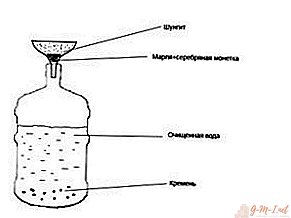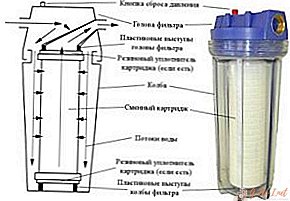 Water treatment is an urgent problem for urban and rural residents, owners of summer cottages. Water in water pipes, wells, artesian wells, natural reservoirs is filled with suspensions, chemicals, harmful microorganisms.
Water treatment is an urgent problem for urban and rural residents, owners of summer cottages. Water in water pipes, wells, artesian wells, natural reservoirs is filled with suspensions, chemicals, harmful microorganisms.
Making a carbon filter for water
Special industrial products are used to filter water. The principle of operation is identical. H2O is passed through special fillers, on which solid fractions, chemical and other compounds are deposited. Units are convenient to use, aesthetic, the final product is harmless to the body. The disadvantages are associated with a small volume of pumped liquid, a quick failure of the filters.
The way out is often associated with the independent manufacture of filter devices.
The best option is the use of carbon cleaners. Charcoal and activated carbon are used. In the first case, multiple cleaning of the absorbent is required (until the final removal of dust and small particles). Benefits:
- Effective retention of toxic substances.
- Removing unpleasant odor and taste of water.
- Creating a barrier to organic substances, including pathogenic bacteria and viruses.
- Hydrotreating to a natural clear appearance.
- Environmental friendliness.
- Long service life.
- No reagent flushing required.

Step-by-step instruction
Filtering mechanisms work on a single principle and are similar in design. A typical and common device is a 5 liter plastic bottle. Instead, it is possible to use a container of another material.
Work execution order:
- The bottom is cut out in the tank. This process is necessary for the convenience of pouring water. Other devices are acceptable. For metal products with small holes use pipe bends, funnels.
- Several holes are made in the bottle cap.
- The improvised body of the product is ready. It is mounted with the lid down in a stable position. The filtering process takes 3 hours. Therefore, the bottle is tied to a tree, chair, drainpipe or attached to a stationary object. Under the filter is a container for receiving clean water. If the action takes place in the field, then as such a bucket with a lid is used. A hole is drilled in it to insert the lid of a plastic container. Water is protected from dirt, dust, foreign objects.
- At the bottom of the body of the product is activated carbon. For a five-liter capacity, the layer thickness is 7 cm. If activated or charcoal is fractional, first fine particles are laid, and larger fractions are placed on top.
- Coal is covered with sand. Thickness - 1-2 cm more than a layer of coal.
- The created filter layer is covered with a five-centimeter layer of fine, thoroughly washed pebbles.
- Water is passed through the filter to remove uncleaned components.

The filter is ready to use. The volume of the tank is selected depending on the purpose of the cleaning device. In offices, a liter bottle is sufficient. In private houses, 20-50 liter products are used to prepare drinking water.
Attention! If desired, the filtration layers are reinforced with gauze and special fabrics.
To speed up the filtering process, the layers of pebbles, sand, coal are reduced. This method is used for rough water treatment. Subsequently, it enters industrial production devices (cartridge consumption is reduced).
How to make a carbon filter from PVC pipes
PVC pipe is often used as an element of a water purification system using carbon filters. In addition to the pipe, the design includes two containers. Usually these are two plastic volumes of 5 liters.
Step-by-step instruction
The plastic cap from the container is glued into the pipe. 4-5 small holes are drilled. In this way, a substrate is created on which gauze, bandage or cotton wool is applied. The primary filter is created:
- The cartridge is filled with synthetic materials (synthetic winterizer or analogues).
- The pipe is tightly closed with a removable cap (to remove the filter as it is used).
- The plastic container is inserted with the neck into the pipe and secured with silicone glue. To enhance strength, the structure is additionally reinforced with electrical tape. The further process is typical. Absorbent is poured into the pipe.
- In the lower part of the pipe is connected to the second tank, purified water flows there.
- The system is firmly mounted to the wall.

Important! The synthetic winterizer should not fill the pipe too tightly. This will make it difficult to pass water, the performance of the device will deteriorate. All connections of plastic containers are regularly checked for leaks to prevent leaks.
Instead of synthetic materials, the use of fabric filters is undesirable. They eventually begin to rot. It is difficult to do without replacing the kit.




Leave Your Comment